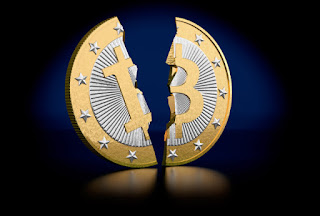The
hottest toy of the season, fidget spinner, has made their way into
the fingertips of many to help with anxiety attacks."Fidget
spinners" are small, ball-bearing devices that the user can
rotate between his or her fingers. Made up of a variety of materials
from metal to plastic, designs varying anywhere from 2-5 propellers
that surround the center bearing and when spun it maintains its
momentum by continuing to spin the object. The most popular of the
models happens to be the tri-spinner fidget toy.
Numerous
studies discuss the benefits that fidgeting has on the body, how it
boosts memory, focus and creativity. And a recent study published in
the American Journal of Preventive Medicine found fidgeting can make
you healthier. Fidget spinner are the biggest gadget trend of 2017.
These aren’t just for kids either, individuals of all ages can
benefit from using fidgets, but especially individuals with the
following:
-
Anxiety
-
ADHD/ ADD
-
Autism or Aspergers
-
Sensory Processing Disorder (SPD)
-
Behavioral Problems
-
Inattention/Difficulty Focusing
-
Shyness/ Social Anxiety
Fidget
spinners were invented by Catherine Hettinger, who showed her
invention to Hasbro way back in 1997. The 62-year-old had a patent
from 1997 until 2005, but was not able to afford the fee to renew her
exclusivity to the gadgets, which was $400, the equivalent of around
£310. No wonder why she stays away from scene!
A
fidget spinner was launched as a toy that was mainly marketed as a
stress relieving device. These are devices that are portable enough
to fit in the palm of your hand.
How does it work? It spins around and creates a hypnotic effect. This is meant to relieve stress and anxiety as your brain is involved in a manner, which provides you comfort in stressful situations. Therefore, when an autistic child plays with a fidget spinner, the brain of the child is believed to release happy or stress relieving hormones. The continuous movement of the gadget helps in keeping the child focused on one activity which involves a great deal of concentration. Thus by using the fidget spinner, the children are expected to curb down the symptoms of autism which are mainly caused by hyper-sensitive sensory nerves. The tactile sensations, as well as the vision of things spinning steadily are reported to induce soothing feelings to the easily stimulated minds.
How does it work? It spins around and creates a hypnotic effect. This is meant to relieve stress and anxiety as your brain is involved in a manner, which provides you comfort in stressful situations. Therefore, when an autistic child plays with a fidget spinner, the brain of the child is believed to release happy or stress relieving hormones. The continuous movement of the gadget helps in keeping the child focused on one activity which involves a great deal of concentration. Thus by using the fidget spinner, the children are expected to curb down the symptoms of autism which are mainly caused by hyper-sensitive sensory nerves. The tactile sensations, as well as the vision of things spinning steadily are reported to induce soothing feelings to the easily stimulated minds.
Spinners
give your hands something constructive to do when you feel nervous.
Fidgets
can take away the focus of tension (i.e. a conversation, a test,
etc…) and instead re-directs it to the spinner.
Spinners
restore some control back to the individual during perceived “out
of control” situations, empowering them with more confidence and
security.
One
of the things which people like about fidget spinner is that it
produces distinctive and unique imagery effects when being spun. Of
cousrse therapeutic benefit similiar to the motion of fish in ponds
or from staring at the bonfire can be obtained from observing the
visualization produced by the spinner
Taking
the fidgets for few spins can help easing the dreadful feelings
inside our minds, because the ball bearings inside the body act as
support to maintain the spin with the minimal efforts. The perpetual
motions of the spinner induces the feelings of maintaining order and
assurances that everything going on just fine.
Because
spinners are a fun, unique fidget coming in all different sizes,
shapes, and colors, many kids are curious about them and will strike
up a conversation about them. Yeah , it can be used as a conversation
tool..
As
a mother, I think these are good toys for kids.These little gadgets
may just keep your kids off the electronics and desiring to attempt
tricks and be outside with these spinners to test what they can do.
Anything that helps keep kids off electronics must be a good thing,
right?!
Some
of the points to keep in mind regarding fidget spinners are:
-

Fidget Spinner The bearings are removable and can cause a choking hazard if children are not monitored. -
Most teachers agree that they serve more as a distraction in a classroom setting than a means by which to center focus.
-
When you’re looking at a fidget spinner, your vision dulls and blurs around you, causing you to get a little dizzy from having wired off into some whirl of the spinner. That’s not a good thing because, for some people it could take time to regain your vision to its full potential and it can actually cause your eyes to water and your head to ache and remain heavy for long after you have stopped using the object.
-
It encourages a sedentary lifestyle as you can sit for hours just spinning. Fidget spinners encourage you to be seated which is not good for your health..
-
There is no doubt that fidget spinners are great for those 5-minute breaks from your daily life chores. But, have you not heard the saying that too much of anything is bad for your health? The same can be said about a fidget spinner. If you sense the fidget spinner is distracting you or your child more than it’s helping, you’re probably right in throwing them away...








